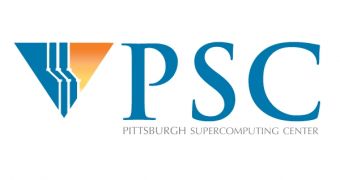The Pittsburgh Supercomputing Center (PSC) got the National Science Foundation (NSF) to help it buy an SGI UV1000 system back in July, and the Blacklight is now up and running.
Basically, Blacklight is a supercomputer that boasts the world's largest shared-memory systems.
While the total memory is of 32 terabytes, said memory is partitioned into two connected 16-terabyte shared-memory nodes.
This would be impressive enough on its own, but the system builders went further and made it possible to access those 32 terabytes as a single memory space.
It isn't always possible, but certain programming approaches, like message-passing and partitioned global address space (PGAS), can accomplish that more or less easily.
“We’ve been at this for 25 years and we’ve become expert at working out the sometimes perplexing problems that go along with bringing a new system through the process of shakedown and final testing to provide researchers with a maximally productive tool,” said PSC scientific directors Ralph Roskies and Michael Levine,
Blacklight is used in science and engineering and has a fast boot speed, high I/O file performance for very large datasets (without needing to change application software), good tools for diagnosing research application problems, support for Zest (a high-speed memory snapshot utility) and various other assets.
It is a resource of XSEDE, the NSF cyberinfrastructure program, but will also, indirectly, benefit the research community as a whole by improving performance for other large-configuration SGI UV1000 systems.
“Collaborating with PSC on our newest and largest shared-memory system has been of great mutual benefit,” said SGI Chief Technology Officer Eng Lim Goh.
“These enhancements have improved the performance and effectiveness of our UV architecture. The PSC staff have years of hands-on experience with our largest SGI systems, and they have become a valuable partner and technical resource as we develop our next designs for our customers.”

 14 DAY TRIAL //
14 DAY TRIAL //